15 Best NES Games Never Released Outside of Japan
From the wonderfully weird to the wrongfully overlooked, these are some of the most notable NES games that never made it to the West in their day.
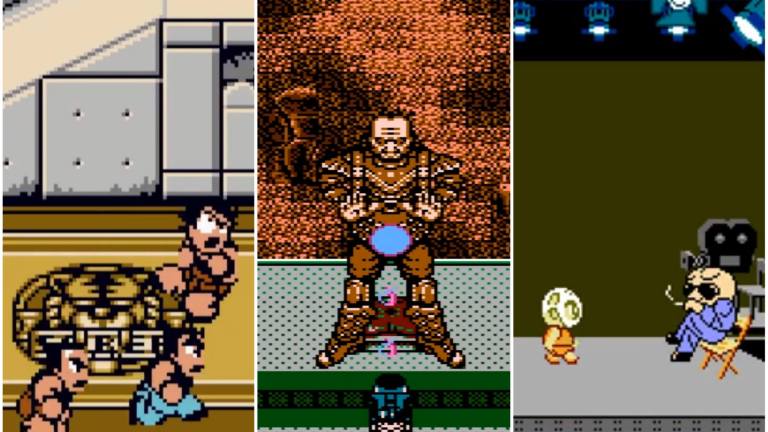
In 1983 Japan released the Famicom, which changed gaming forever. Two years later, it was released in the United States as the Nintendo Entertainment System (NES), just in time for the console’s first true crown jewel release, Super Mario Bros. For gamers in the US, the two-year gap was a godsend. That gap gave Japanese developers time to work out some technical kinks and build up enough of a library to ensure that. by 1985, they definitely had a grasp on both the hardware and some crucial console game design principles. Of course, not all of those developers’ ideas made it to the West.
So many games appeared on both the Famicom and the NES, but a surprising number of titles never made that journey across the world in their day. Sometimes, the games were held back due to cultural differences or hardware restrictions. For instance, there’s the infamous 1986 Taito release Takeshi no Chōsenjō: a vanity project from Japanese actor Beat Takeshi that was not only intentionally obtuse in its design but featured a section where you had to sing karaoke into your Famicom controller’s microphone.
Maybe North America was better off without that insane 8-bit adventure from the psychotic principal in Battle Royale, but there were hundreds of other Famicom games that never made it to the NES, and that list includes some real gems. Here are some of those notable games.
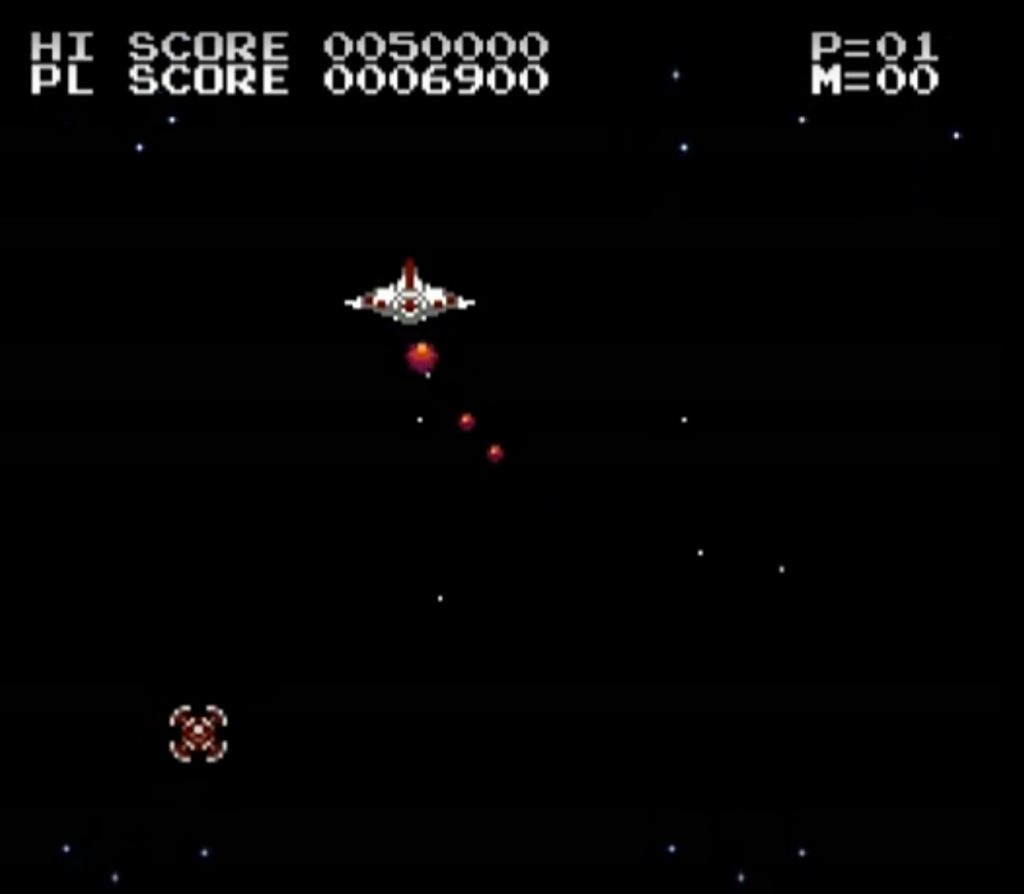
15. Falsion
The closest thing you would ever see to Star Fox on NES is Konami’s Falsion. The game acts as a space shooter, but it’s not like Konami’s usual “Shmup” fare. This time you’re behind the action, following your ship as it goes straight forward into the horizon or space itself. The visuals are quite impressive, and that unique point of view makes for a fantastic novelty, especially once the boss battles kick in.
It was also available to play with the Famicom’s 3D visor accessory. Unfortunately, the 3D peripheral was a bust and was never released outside of Japan. That’s too bad. Sure, it was a failure, but the US did receive Virtual Boy (that other failed 3D visor from Nintendo) a few years later. At least the people in Japan got to play a 3D game or two that weren’t completely colored in red.

14. Miracle of Almana
This game belongs in a museum!
Konami may have already had a whip-wielding adventurer at the forefront with Simon Belmont, but that didn’t stop them from aping Indiana Jones with this Famicom project. Kaito, a fedora-wearing adventurer, is out to track down a mystical jewel and return it to its rightful home. That’s fine by me, as Indiana Jones really needed to star in an 8-bit game that wasn’t awful.
The main gimmick of the game is Kaito’s grappling hook which allows him to climb to higher platforms. It’s like Bionic Commando, only with the delightful addition of being able to actually jump! You can’t jump high enough to negate the need for the grappling hook, but it’s still nice that you are more flexible when it comes to evading enemy attacks.
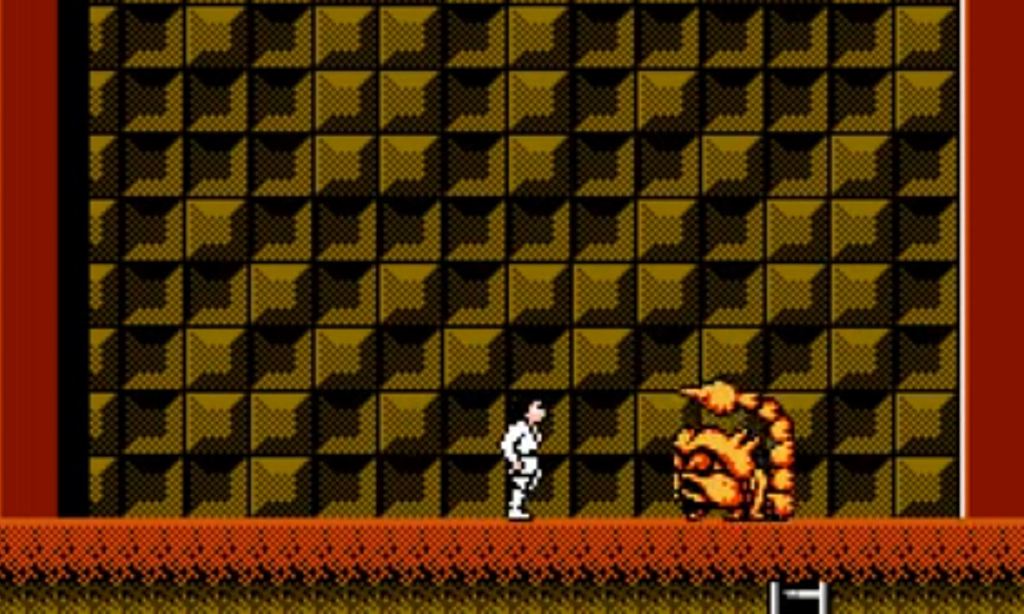
13. Star Wars
A New Hope was a rather tricky movie to adapt into a video game. Our hero Luke is treated as dead weight until the last half hour, his iconic weapon is only used for a moment of training, and he never gets to meet his nemesis face-to-face. While the SNES’ Super Star Wars simply turned Luke into a stone-cold mass murderer who took on lots of random droid bosses, the Famicom Star Wars game had its own interesting take on the film’s story.
For the most part, the game is a platformer where Luke goes from planet to planet, armed with a lightsaber and blaster as he fights through various Stormtroopers. The part of the game that most people remember is how it decided to go full-on Super Mario Bros. with its boss design. Remember when you’d unload fireballs onto earlier versions of Bowser, but he would die while turning into a different enemy sprite, therefore suggesting that it was an imposter? This game does the same thing with Darth Vader, only here, he would turn into a giant scorpion or a Wampa or a pterodactyl skeleton.
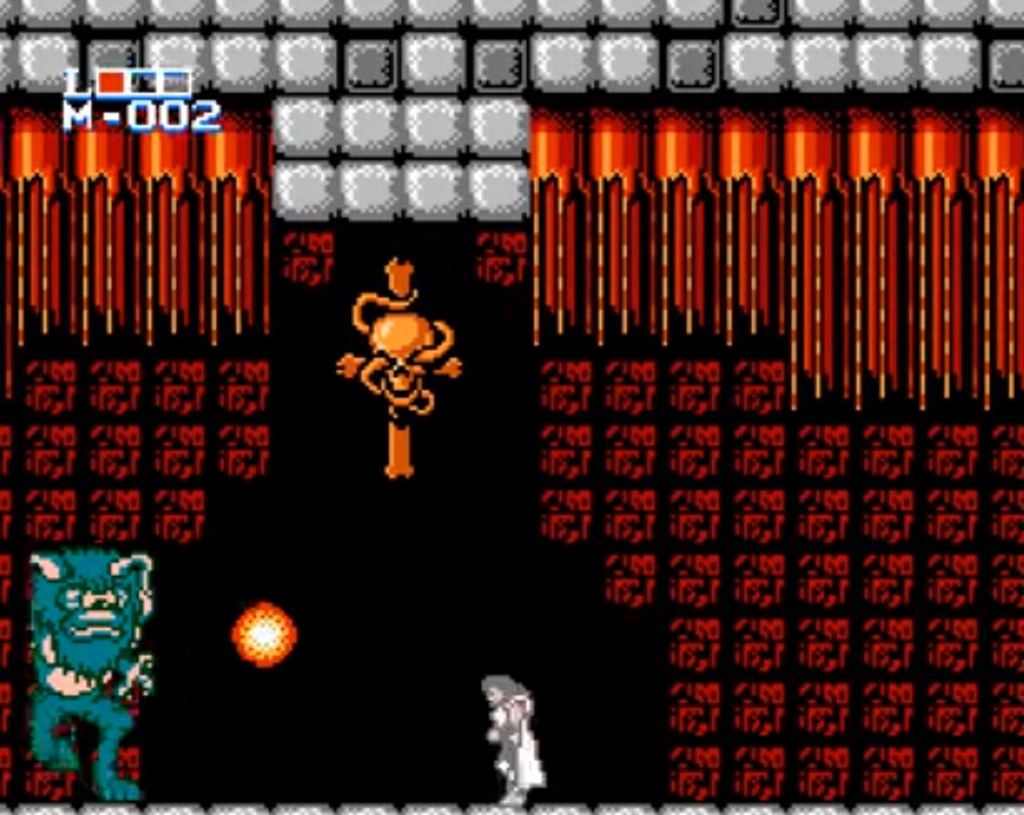
12. Holy Diver
Let’s say you’re a fan of Castlevania, but you wish the game was just a little bit harder and somehow more metal. Sure, Castlevania has you murder the Grim Reaper with crucifix boomerangs, but what if you got to play a game as a long-haired sorcerer named after Randy Rhoads who is the son of Ronnie James Dio: protégé of Ozzy Osbourne, and brother of Zakk Wylde? Also, it’s the year 666, because hell yeah it is. Welcome to Holy Diver.
Instead of whipping, Randy shoots fireballs and is capable of generating all kinds of magic spells. He can also walk on lava by summoning blizzards and transform himself into a dragon, just in case you suddenly found yourself questioning how metal he really is. This Japanese gem is a game that you can not only play but also paint its contents onto the side of your van.
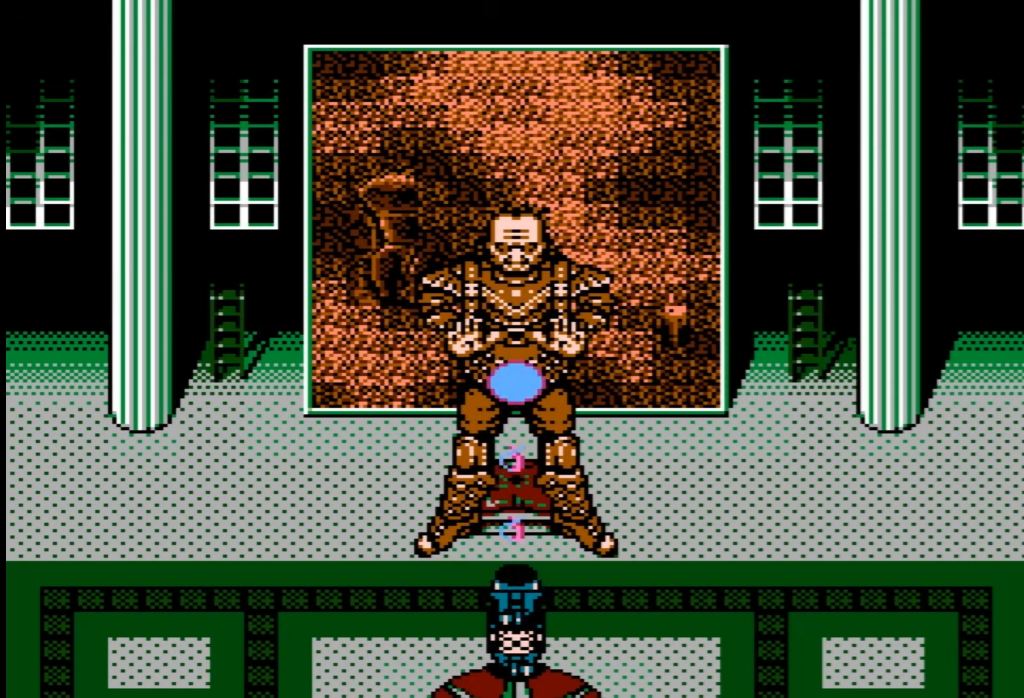
11. New Ghostbusters II
In the US, if players wanted to recreate the events of the second Ghostbusters movie on NES, they were stuck with Imagineering’s lousy Ghostbusters II. In Japan, HAL Laboratory put together a very different, and way more fun, adaptation with New Ghostbusters II.
The game’s setup allowed you to select two Ghostbusters (including the option to include Louis Tully in your crew!), with one manning the proton pack and the other manning the ghost trapper. The ghost trapper companion would be controlled by the CPU, but a second player could take over. It’s such a simple (yet welcome) take on gamifying the Ghostbusters concept. Luckily, HAL Laboratory would create a Game Boy port that used the same engine, albeit with different level designs. That one at least got released in the US, as did a truly bizarre DOS adaptation of the movie.
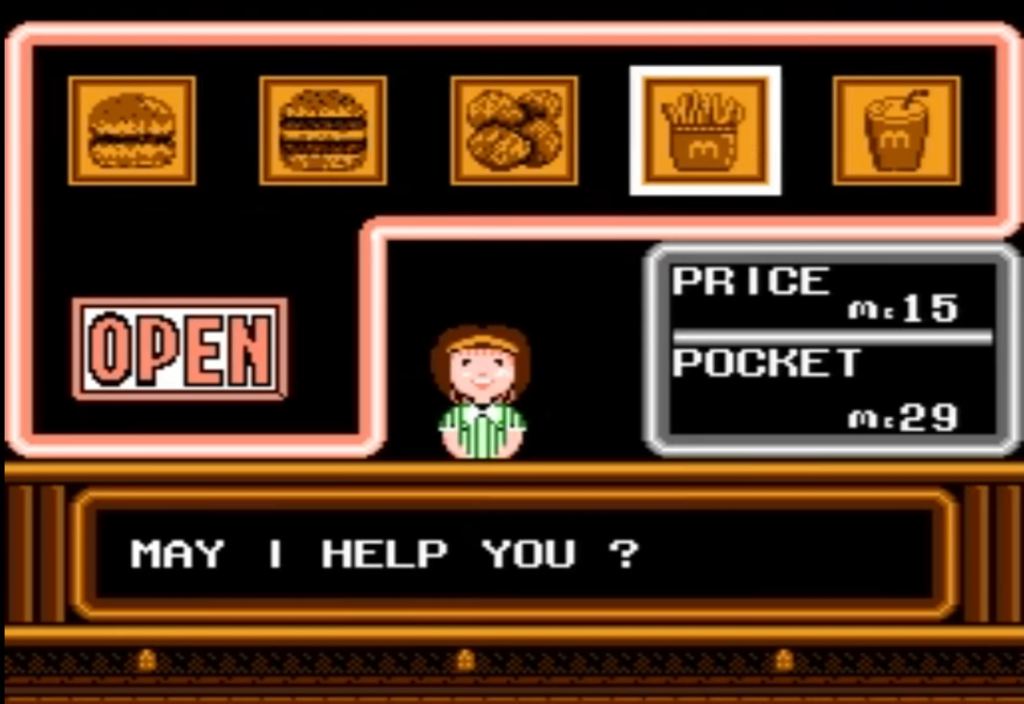
10. Donald Land
In 1992, Virgin Games released the McDonald’s-themed MC Kids in North America and Europe. It was actually pretty good, but it had you playing as Mack and Mick: two boys too uncool to even make it into the Burger King Kids Club. Before that, in 1988, Data East made their own McDonald’s platformer called Donald Land which gave the people what they wanted. After all, people didn’t want to play as two “cool 90s kids;” we wanted to play as Ronald McDonald himself! We want to believe in magic!
Donald Land not only lets you play as Ronald McDonald (throwing apples for offense, probably because it takes too many years to give your enemies heart attacks via projectile burgers) but the whole golden age McDonaldland crew. Their appearance is actually some kind of miracle, given that those characters were at the tail end of being phased out of advertisements due to a lawsuit by Sid and Marty Krofft. As such, I’m pretty sure this is the only videogame to feature Grimace’s Irish uncle.
I’m not sure if it was the legal issues that kept Donald Land away from the States or if it’s because of how bonkers and, at times, dark it is. For instance, the final boss is Gumon: a character I can best describe as Ronald McDonald’s Wario. The guy is a total horror show.
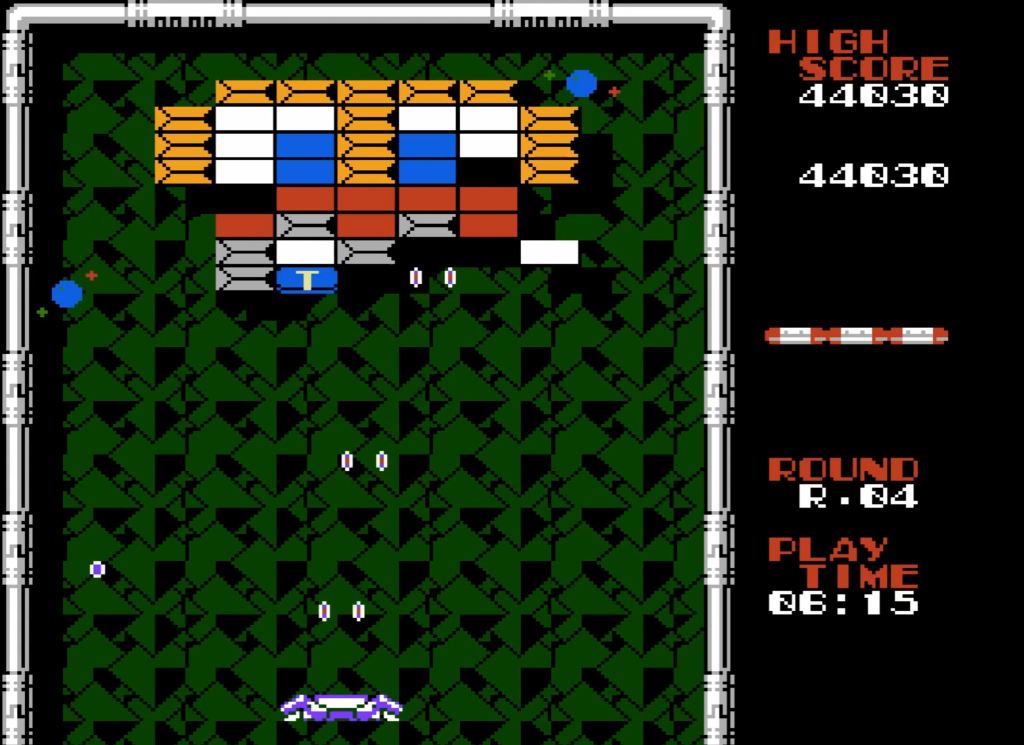
9. Arkanoid: Revenge of Doh
As a longtime Homer Simpson fan, it’s so hard for me to type out that title without adding an apostrophe.
Arkanoid is one of those classic games where you forget it even exists until you see it brought up somewhere and then suddenly get the feeling to play it. Chances are, you’re thinking of playing Arkanoid right now! Who doesn’t get a flow of endorphins from sending a ball up the side of the screen so it ends up bouncing up and down some bricks for about 20 seconds?
The sequel got a bit more creative with the setup by not only adding more power-ups but also adding some replay value thanks to a system that allows you to choose between two paths after completing a level. There are also more block types and a crazy final boss fight against a giant brain with tentacle limbs that works surprisingly well with the game’s engine. Plus, it’s definitely a little amusing that Arkanoid of all games suddenly has lore.
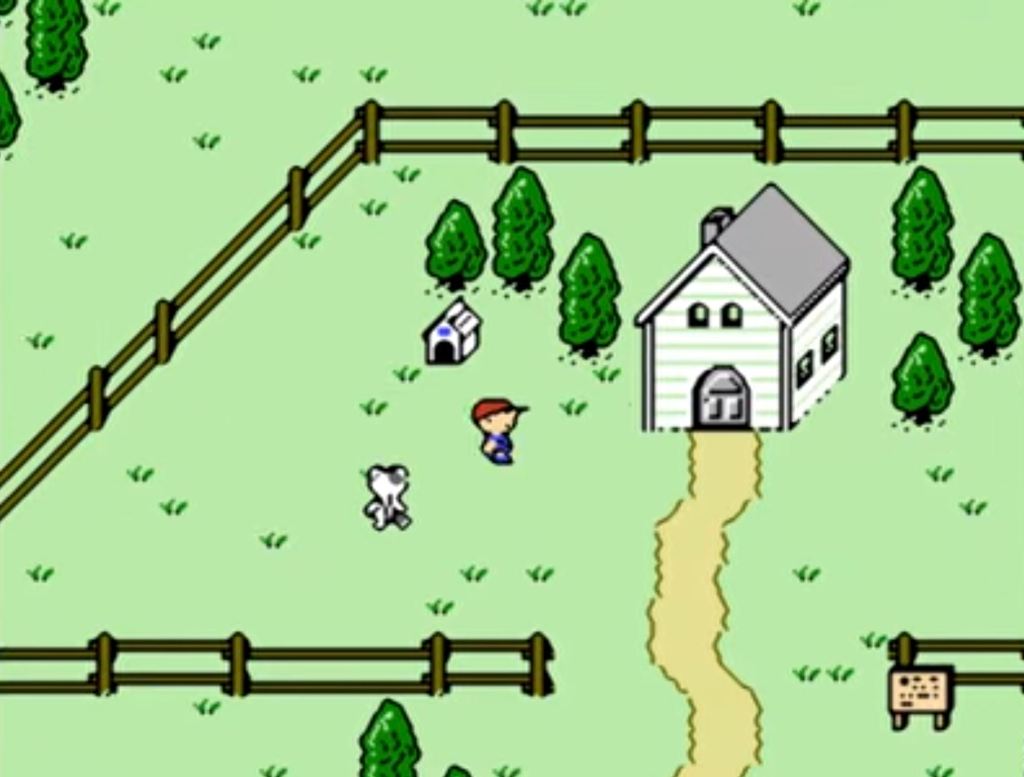
8. Mother
When it came time to translate Mother to English, Nintendo seemingly looked at North America like Marty McFly and thought, “I guess you guys aren’t ready for that yet. But your kids are gonna love it.”
Much like its cult classic SNES follow-up Earthbound, Mother takes the RPG concept and throws it into the modern world, mixing a goofball sense of humor with utter weirdness and a somewhat twisted edge. Psychic child Ninten and his buddies get into wacky adventures involving robots, aliens, and the occasional random fight against hippies. It came very close to getting an NES release, but Nintendo got cold feet and didn’t think an audience would should up for it.
They were probably right about that, but Mother’s popularity has only grown throughout the years. In 2015, it finally got tossed onto the Wii U Virtual Console for North America and Europe.
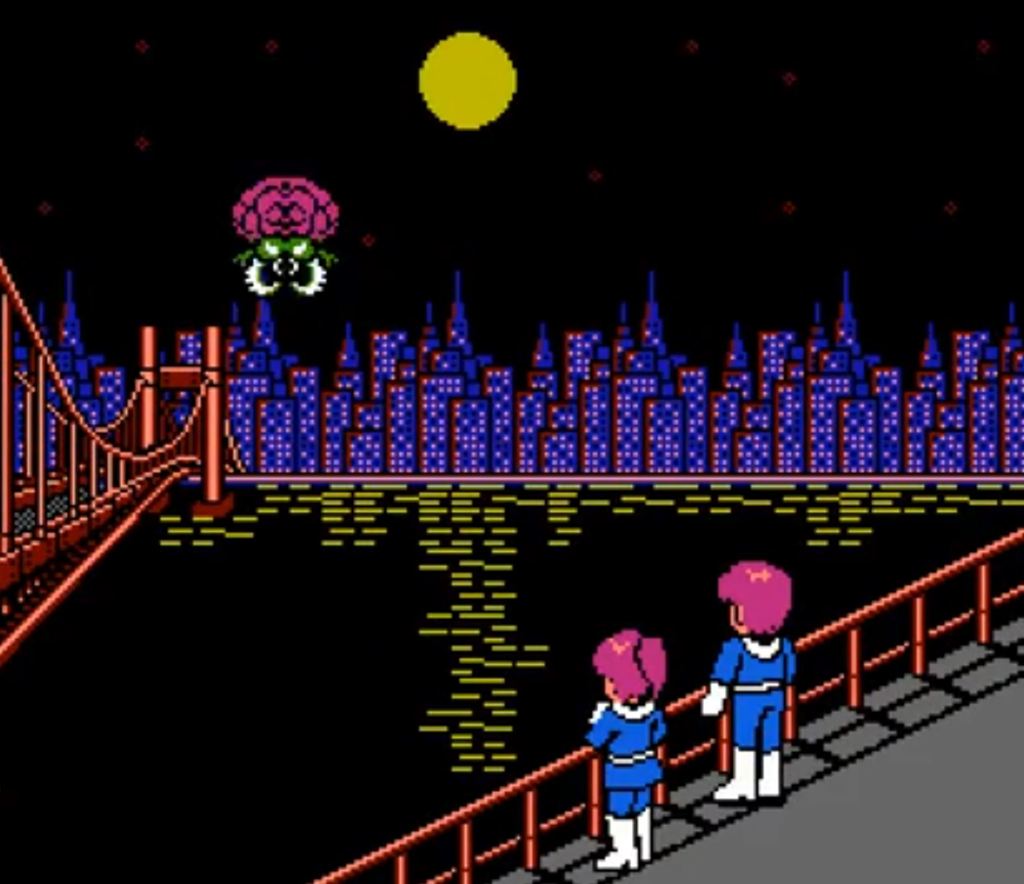
7. Love Warrior Nicol
Somebody at Konami was seemingly playing Legend of Zelda and casually thought to themselves, “This is pretty great, but you know what would be cool? If we did Zelda…in space!” Hence we got Love Warrior Nicol: a sci-fi take on Legend of Zelda with a touch of Blaster Master’s aesthetic.
This game sees you run around complicated maps presented via a top-down view, gather pieces of a MacGuffin, fight to rescue your captured love interest, and even fight a final boss who I can best describe as Space Ganon. That’s not to say it’s a carbon copy of Zelda, though. You get to run and gun with a space blaster instead of trying to safely get close with your sword. Enemies are also a little more frantic. Plus you can jump! That’s…something! It’s not nearly as lengthy as Legend of Zelda, but it’s a really good time.
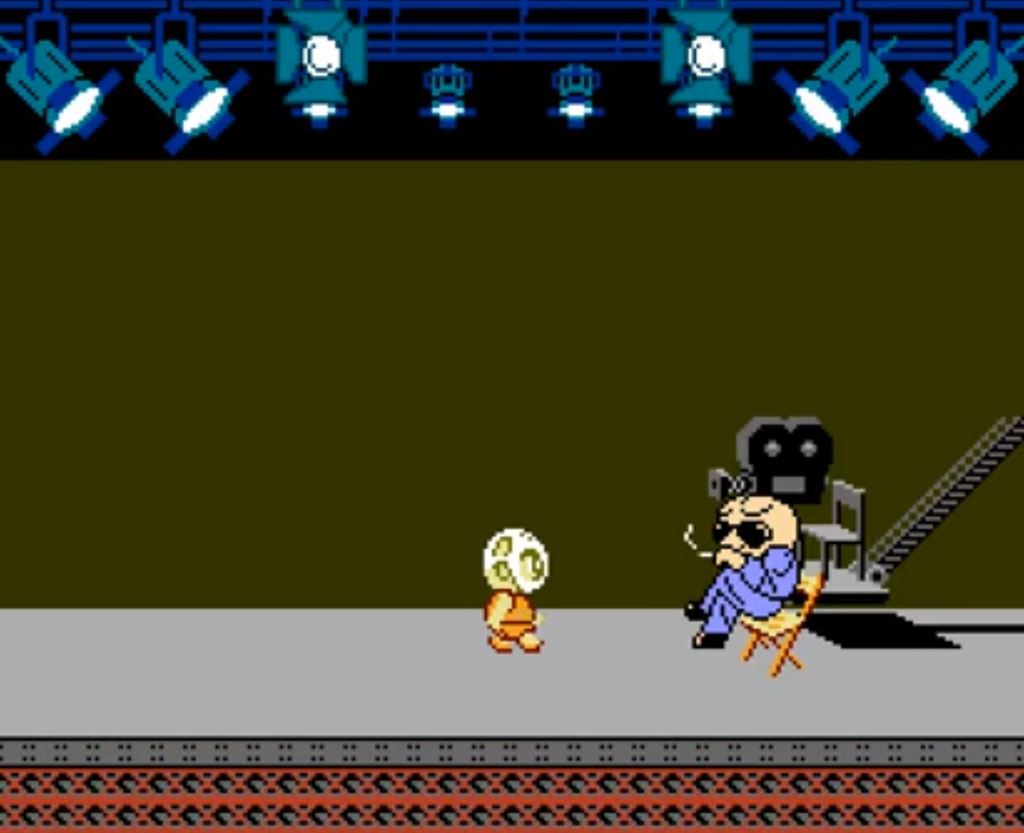
6. Splatterhouse: Wanpaku Graffiti
Before Mortal Kombat II’s bottom line made Nintendo rethink its stance on violence and gore, there was no game that felt as antithetical to the company’s ethos more than Splatterhouse.
That dark and ghoulish brawler felt at home at the arcade and the TurboGrafx-16, but it was something Nintendo would not touch with a ten-foot pole. That makes it more shocking that the Famicom got their own Splatterhouse game…in the form of a cutesy comedy adventure.
Splatterhouse: Wanpaku Graffiti saw you play as Rick “Original Character Please Don’t Sue” Taylor as he fights through hordes of monsters to save his girlfriend Jennifer. It has more of a platformer style to it and gets really silly with some of its boss designs. At one point, a vampire appears and starts dancing with zombies in a scene legally distinct enough to not be “Thriller.” There’s also a half-man/half-fly boss who is introduced via a Jeff Goldblum sprite entering a teleporter.
But hey, North America got Goosebumps: Escape from Horrorland, which featured Jeff Goldblum as Dracula, so it all worked out in the end.
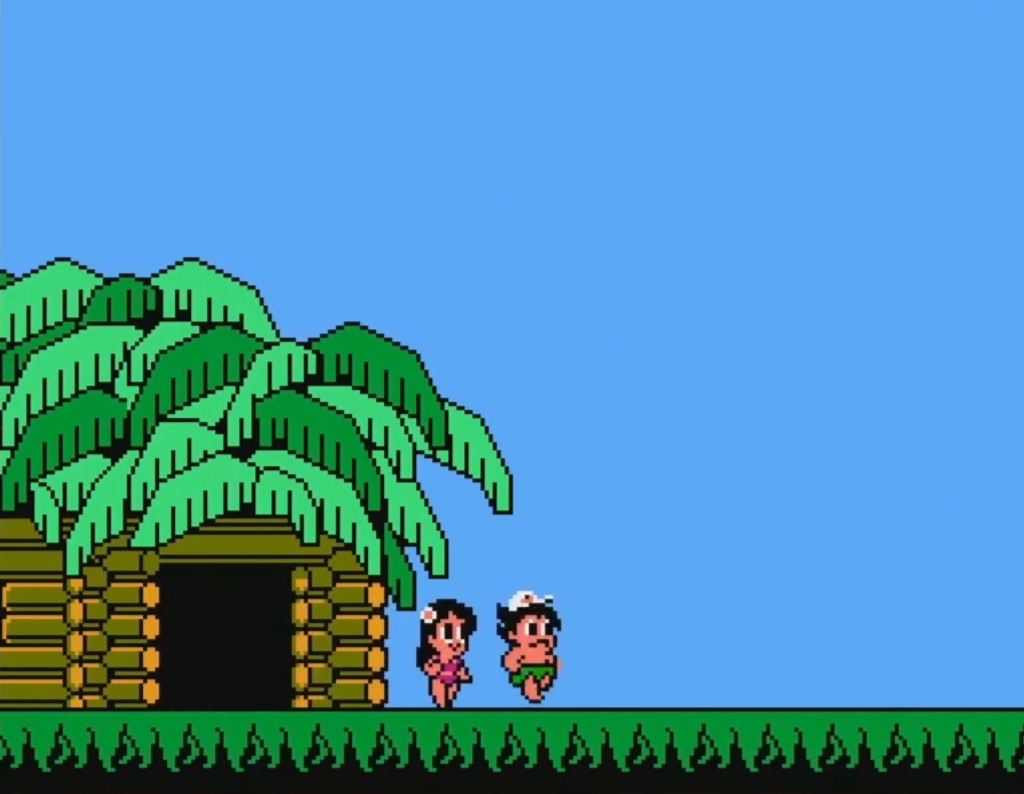
5. Master Takahashi’s Adventure Island 4
Despite its excellent quality, it’s easy to figure out why Adventure Island 4 never made it out of Japan. This was the final release on the Famicom and the only NES games to come out after it was the Disney trifecta of the Jungle Book, Aladdin, and Lion King (the latter two were not released in North America). Gamers had moved on completely to the SNES, and it just did not make sense to translate and rerelease Adventure Island 4 in a country that no longer cared.
That’s a shame, though, because this game sends the console out with a bang. Unlike the previous adventures, this one removes the basic level system and turns the whole thing into a Metroidvania-like adventure where you get to fully explore the island. There are a ton of special weapons and abilities that can be unlocked throughout the game, including meeting certain challenges and winning contests.
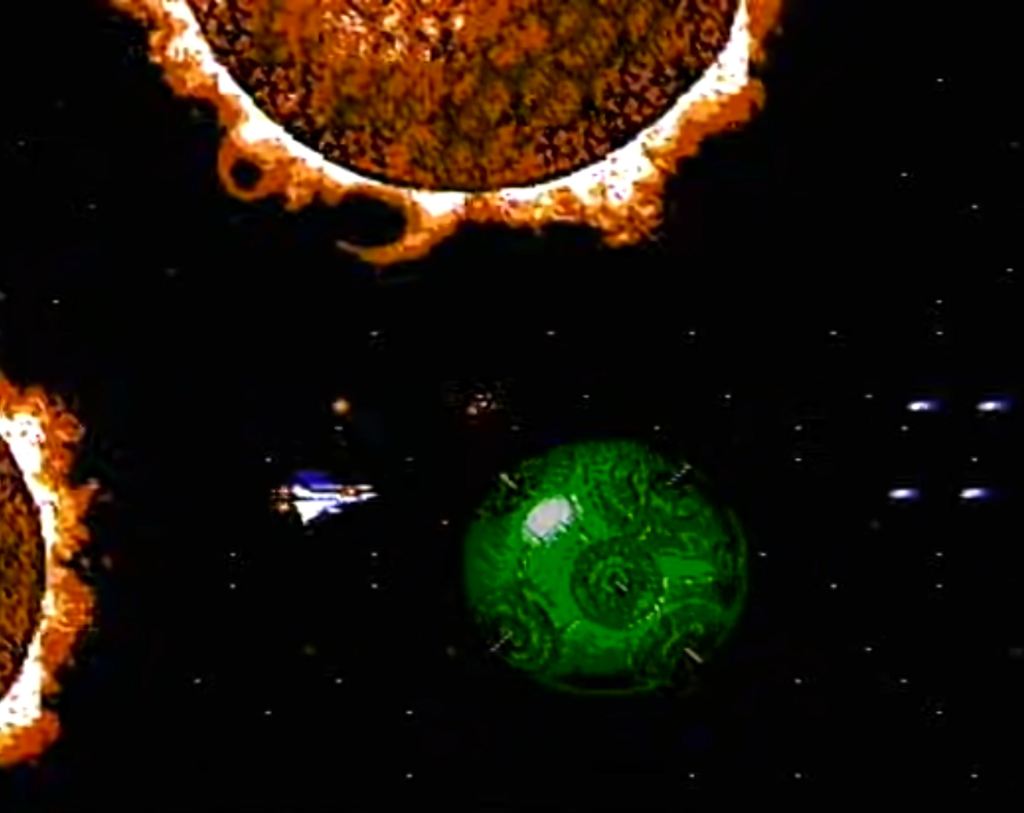
4. Gradius II
The first Gradius is probably the NES space shooter game. Konami created a completely iconic example of that genre and then followed it up with the equally great Gradius II. Along with a new system to configure what kind of weapons your ship can fire with, the sequel introduced new challenges, including a final boss that is probably the most nightmarish visual in 8-bit history. The game was an outright improvement on a classic and yet, it never came out for the NES.
Why? Well, the game was more than your average Famicom cart. It came with a special chip that enhanced its graphics and sound. Such a thing was something of a hassle, and since Gradius wasn’t quite considered a household name in the States at the time, Konami decided to just let it slide. Americans would have to wait 20 years for this version of the game to hit the Wii.
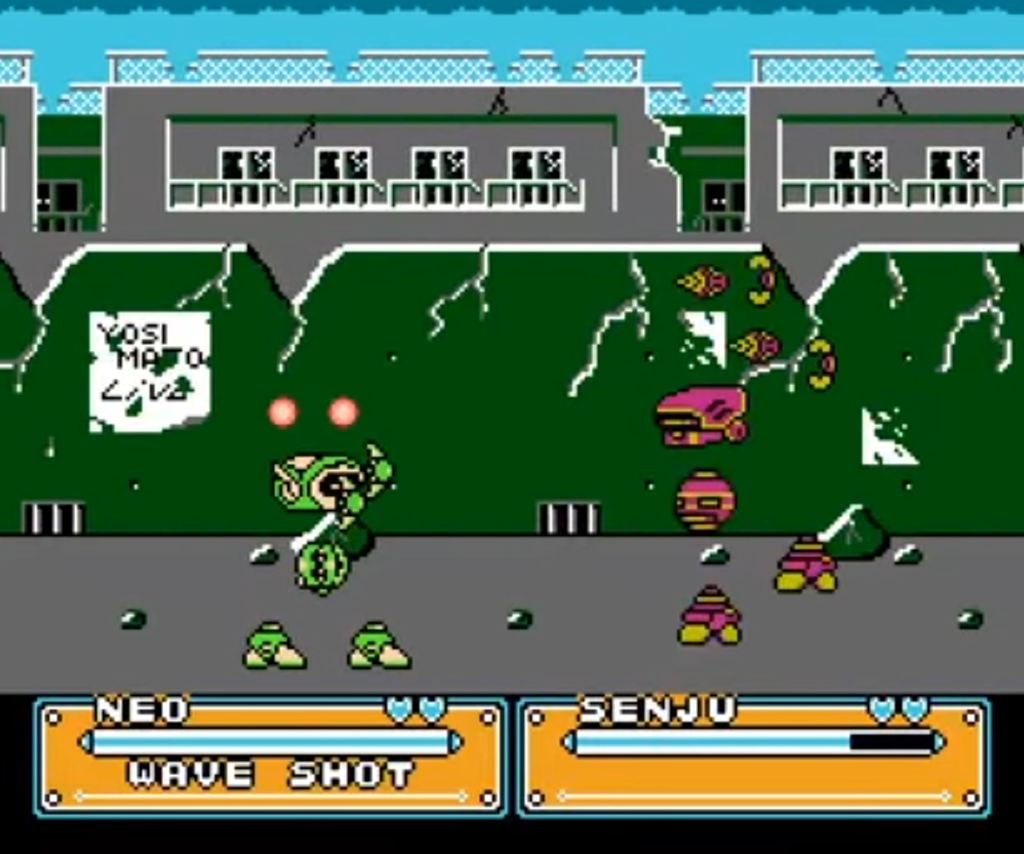
3. Joy Mech Fight
Fighting games generally didn’t work well on Nintendo’s 8-bit consoles. The Famicom/NES tech wasn’t very optimal for fighters, both due to their graphical limitations and the control schemes. That’s why Joy Mech Fight is an artistic triumph. It works around the Famicom’s issues and creates something equally beautiful and distinct.
This one-on-one fighter is all about big robots duking it out. Instead of being tiny sprites, the characters are fashioned out of sprites. The robot designs have heads, hands, feet, and tiny torsos, but there’s nothing visibly connecting them. It’s almost like a puppet show in how the characters are animated. The game also offers a massive roster of 32 available fighters. Even the backgrounds look pretty damn good for an 8-bit game.
Interestingly, the robot Sukapon would go on to appear in Super Smash Bros. Ultimate as both an assist trophy and a spirit. If you’ve ever wondered what the deal is with that pink pile of circles that would occasionally show up to kick your ass, now you know.

2. Nekketsu Fighting Legend
Nekketsu Fighting Legend is part of the Kunio-kun series (known elsewhere as River City Ransom). This game takes the setup of your usual beat’em up and turns it into a four-man fighter. Whether this means two-on-two or every man for themselves is up to you. Either way, it’s a total blast.
This could very well be the first four-player fighter, though it apparently came out roughly at the same time as Namco’s obscure fighter Knuckle Heads in December 1992. What makes Nekketsu Fighting Legend truly shine, though, despite its simpler graphics, is how there are all sorts of death traps laid out in the various backgrounds. Maybe you can step on a landmine. Maybe there’s an electric wall you can be thrown into. One stage even has you struggle against an endless torrent of water that knocks you into a pile of spikes. It’s…kind of amazing.
For real, finding out that this game existed so many years later hurts because I would have played this forever.
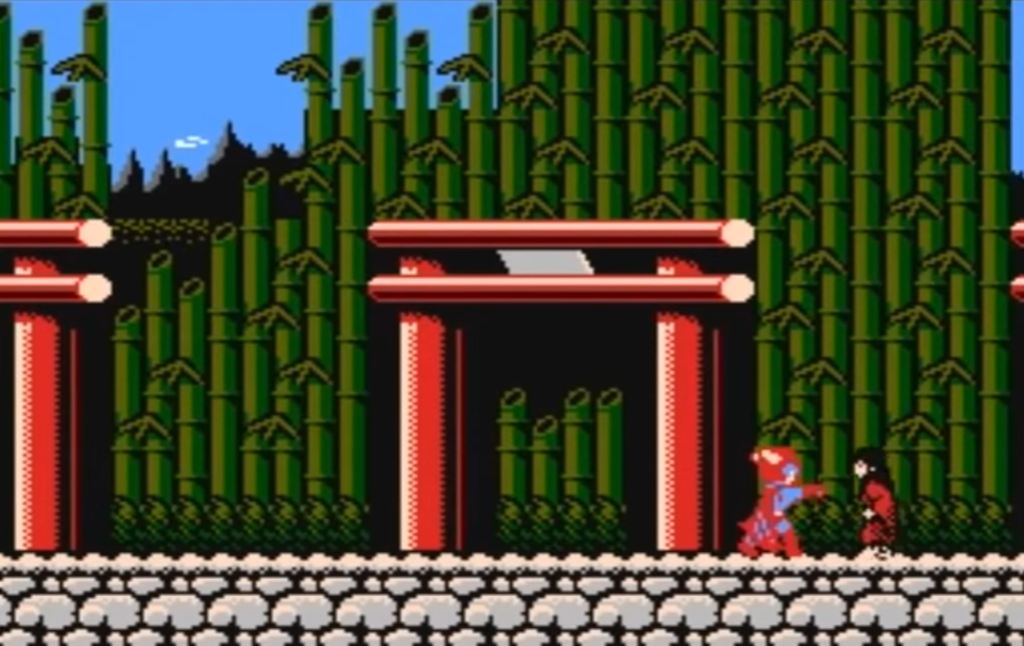
1. Wai Wai World/Wai Wai World 2
Before Super Smash Bros. and King of Fighters, the best thing we could get in terms of a giant video game crossover was watching Captain N: The Game Master on Saturday mornings. Luckily for gamers in Japan, they had a giant video game crossover that did not involve the only version of Mega Man worse than “Box Art Mega Man.” That’s because they got to play 1988’s Wai Wai World and its 1991 sequel.
Set in Konami World, heroes from various Konami titles are gradually rescued and team up in this mix of platforming and shoot ’em-up levels. The sequel is easily the better of the two, both in design and sprite work, but the first one is just too bonkers to exist. Sure, there are characters you’d expect to see in such a game (like Simon Belmont, Goemon, and one of those Gradius Easter Island heads), but Konami also released a Famicom game based on King Kong Escapes, so King Kong makes an appearance as well! They also did those early Goonies games, so even Mikey Walsh is playable! What other game features Simon Belmont, King Kong, and Sean Astin kicking ass together?
